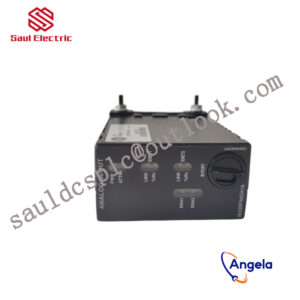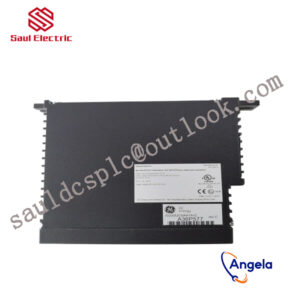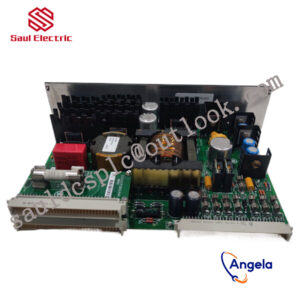Description
IS230TBAIH2C Product Introduction
The specific application scope of the product
will depend on the needs of system integration and industrial application, but generally speaking, this type of embedded controller module can be applied to the following categories:
manufacturing processes, etc.
monitoring and control system.
of the controller module, as well as the specific needs of the customer.
designed to manage gas or steam turbines.
It has a CIMPLICITY graphical interface and an HMI with software suitable for running heavy-duty turbines.
be installed at the bottom of the cabinet. For a small setup that is easy to serve a triple redundant system, up to three components can be installed side by side.
he board can operate within a temperature range of 0 to 65 degrees Celsius without the need for a fan for cooling. NFPA Class 1. This board can be used for two applications.
Why is the industrial Internet inseparable from industrial control? ABB Global CEO Ulrich Spiesshofer recently accepted an exclusive interview with a reporter from Caijing in New York. He believes that the global manufacturing industry is undergoing drastic changes. The era of labor arbitrage is over. Labor costs are no longer the focus of competition. The future of manufacturing lies in In factories that are smaller, closer to consumers, and more agile. Artificial intelligence ( AI ) is the most important technology shaping the future of manufacturing. Currently, AI technology is mainly used in the consumer field, but its large-scale application in the industrial field and among enterprises is more critical. Digital transformation has been a keyword for global manufacturing giants in the past two years, and the industrial Internet is the implementation form of digital transformation. General Electric (GE), Siemens and ABB are all leaders in this regard . Spiesshofer believes that GE”s industrial Internet only collects data and analyzes but cannot control it. As the world”s two largest industrial automation suppliers, ABB and Siemens have the ability to control equipment, which is a significant difference from GE. ABB is headquartered in Zurich, Switzerland. Its history can be traced back to the 1880s. It started from the original electrical manufacturing business and has developed into an international manufacturing giant including electrical products, robotics and motion control, industrial automation and power grid. In 2017, ABB”s revenue was US$34.3 billion, ranking 341st among the Fortune 500 companies. Spiesshofer has served as CEO for nearly five years since taking office in September 2013. Below are the details of the interview. The era of labor arbitrage is over Caijing: Is 2018 a good year for the manufacturing industry? Spiesshofer: From a global perspective, GDP is growing and consumption is also growing. Overall positive. Caijing: What crucial changes are taking place in the manufacturing industry? Spiesshofer: The jobs of the future will be different from the jobs of the past. In the Middle Ages, craftsmen moved between villages, taking their tools with them to work where there was demand; later we invented factories, integrated supply and demand, and invented logistics; later people realized that there was labor arbitrage (Labor Arbitrage, Refers to the existence of moving industries that have lost technological advantages and technical barriers to areas with low labor prices to increase profits by reducing labor costs), so we place factories in emerging countries to benefit from labor arbitrage. Now, with the development of modern automation and robotics, we can break this picture and bring value addition closer to demand. I think the future of manufacturing is in factories that are smaller, closer to consumers, and more agile. I believe that the global logistics chain will also be reduced in the future because we will produce products closer to consumers. The era of labor arbitrage shaping the global manufacturing landscape will be over because we can offset this arbitrage. Recently we opened a new factory in Germany. Due to the adoption of intelligent automation technology, its unit cost is exactly the same as that of the best factories in China. So I think the local market will be repositioned in the future, and the positioning of competitiveness will also change from just considering costs to focusing more on technology and value. Caijing: Many people are complaining that automation has caused people to lose their jobs, and artificial intelligence technology has made the complaints louder. But these new technologies are also creating new jobs. How do you see the relationship between the two? Spiesshofer: In 1990, one-third of the world”s population lived below the extreme poverty line. Today, only 8% rely on technology. In fact, countries with the highest robot densities, such as Germany, South Korea, Singapore, and Japan, also have the lowest unemployment rates. Robots combined with educated people can create prosperity, produce more affordable goods, and lead to economic growth. Government, education and business need to work together to keep up with the changing world. Clearly, millions of jobs are disappearing, but millions of new ones are being created. Taking our own business as an example, we used to have many employees doing metal casting and forging work, but now these tasks are automated. But now we have more employees working in the service industry, developing apps, and working with customers. So I think we should not be afraid of change, but should lead our employees to manage change and promote change. If we succeed, global employment will eventually grow.
IS200VPROH2B Gas turbine system Mark VI
IS200EPSMG1ABB Gas turbine system Mark VI
IS2020ISUCG Gas turbine system Mark VI
IS215VCMIH2BZZ01A GE power control board
IS420PUAAH1AD Gas turbine system Mark VI
DS200QTBAG1ACB Gas turbine system Mark VI
DS3800HRCA1D1B Processor/Controller Mark VI System
IS410STCIS6A Processor/Controller Mark VI System
IS210SCLSH1A High performance processor module GE
IS200DTURH1ABA High performance processor module GE
IS200TRPAS1A Gas turbine system Mark VI
IS420YDOAS1B From General Electric in the United States
DS200DTBDG1 Processor/Controller Mark VI System
IS220PRTDH1A Processor/Controller Mark VI System
IS215PCMIH1A Processor/Controller Mark VI System
IS420ESWAH3A High performance processor module GE
IS210RERCH1RBB High performance processor module GE
DS200TBQBG1ACB I/O excitation redundant module GE
IS220YDOAS1AJ From General Electric in the United States
IS215UCVEH2A High performance processor module GE
DS200DMCBG1AJG From General Electric in the United States
IS200VAICH1C Gas turbine system Mark VI
DS200ADMAH1A Gas turbine system Mark VI
DS200DCFBG1BNC From General Electric in the United States
IS200HFPAG1 From General Electric in the United States
DS200TBCBG1AAA Gas turbine system Mark VI
IS215VCMIH2CA I/O excitation redundant module GE
DS200PLIBG1ACA From General Electric in the United States
IS200EPDMG1B Gas turbine system Mark VI
IS200ECTBG1ADE High performance processor module GE
IS430SNUAH1AC High performance processor module GE
DS200TCDAH1BHD Gas turbine system Mark VI
DS200TBQAG1ABB I/O excitation redundant module GE
IS200TSVOH1BBB High performance processor module GE
IS220PTURH1BF From General Electric in the United States
IS220YDOAS1AJ GE power control board
DS200TCPSG1A Processor/Controller Mark VI System
IS200EPDMG1ABA High performance processor module GE
IS200BPIHH1AAA Processor/Controller Mark VI System
IS215VPROH1B Processor/Controller Mark VI System
DS200PTCTG2BAA High performance processor module GE
IS415UCVGH1A I/O excitation redundant module GE
IS200TBCIH2B GE power control board
DS200TCDAG1B Gas turbine system Mark VI
IS200ICBDH1BAA From General Electric in the United States
IS420YDOAS1B GE power control board
IS200TVIBH2B From General Electric in the United States
IS215UCVEH2AF From General Electric in the United States
IS215PCMIH1A GE power control board
IS210BPPBH2CAA I/O excitation redundant module GE
IS220PPRFH1B From General Electric in the United States
DS200FCGDH1B GE power control board
IS200IVFBG1AAA From General Electric in the United States
IS210DRTDH1A High performance processor module GE
IS220PHRAH1BD Gas turbine system Mark VI
IS200DAMCG1A GE power control board
IS200ECTBG1A GE power control board
IS420ESWAH1A Processor/Controller Mark VI System
DS200TCCBG3BDC Processor/Controller Mark VI System
IS200TDBTH6ABC Processor/Controller Mark VI System
IS200VCRCH1B GE power control board
IS230SNIDH1A From General Electric in the United States
IS200BICRH1A From General Electric in the United States
DS200RTBAG1AHC From General Electric in the United States
IS200DSPXH2DBD Gas turbine system Mark VI
IS410STCIS2A Gas turbine system Mark VI
DS200TBQCG1A I/O excitation redundant module GE
IS200TSVCH2AED I/O excitation redundant module GE
IS200EPDMG1B High performance processor module GE
DS200DCFBG1B Gas turbine system Mark VI
IS200VCRCH1BBB Gas turbine system Mark VI
DS200TCQAG1AFD I/O excitation redundant module GE
DS200ITXDG1ABA High performance processor module GE
IS210AEBIH3BED GE power control board
IS210AEAAH1B Processor/Controller Mark VI System
IS200VTURH2BAC From General Electric in the United States
IS420ESWBH3AX Gas turbine system Mark VI
IS200ERRBG1ABA GE power control board
IS420UCSBH4A From General Electric in the United States
DS215KLDCG1AZZ03A Processor/Controller Mark VI System
IS200PRTDH1A I/O excitation redundant module GE
DS200PTBAG1BAA From General Electric in the United States
IS2020RKPSG2A High performance processor module GE
IS200EGPAG1A I/O excitation redundant module GE
IS200STAOH2AAA From General Electric in the United States
IS200DSVOH1ABA I/O excitation redundant module GE
IS200TBCIH2C I/O excitation redundant module GE
DS200DTBCG1AAA Gas turbine system Mark VI
IS220PDIAH1B From General Electric in the United States
IS210AEDBH4AGD GE power control board
DS200TCEBG1ACE Gas turbine system Mark VI





